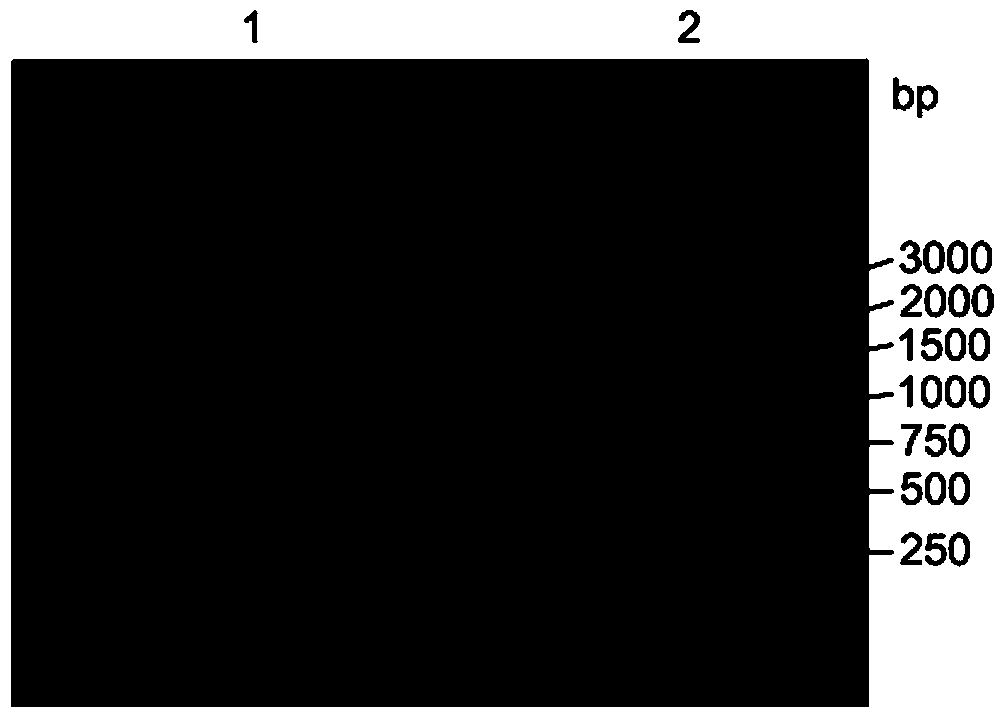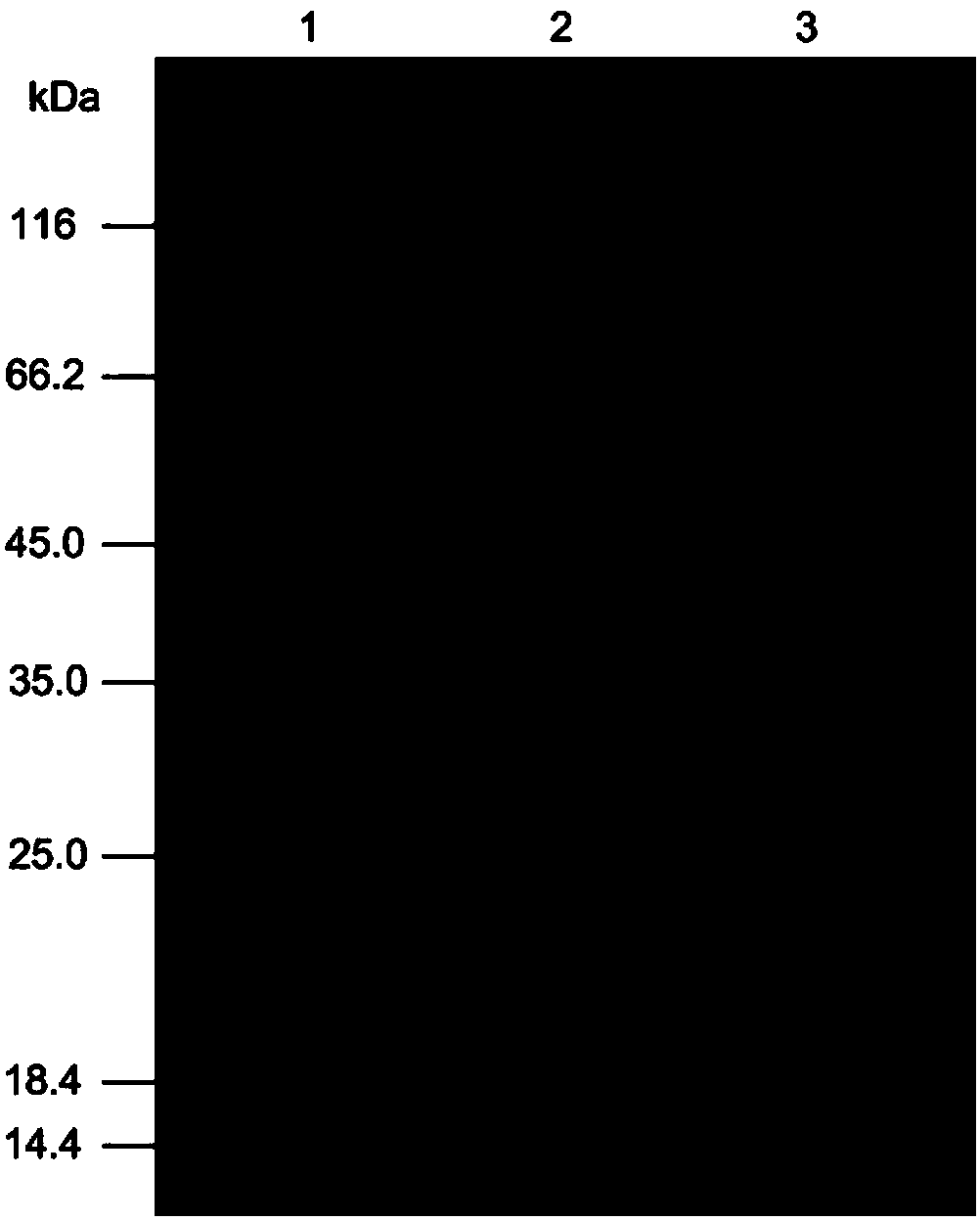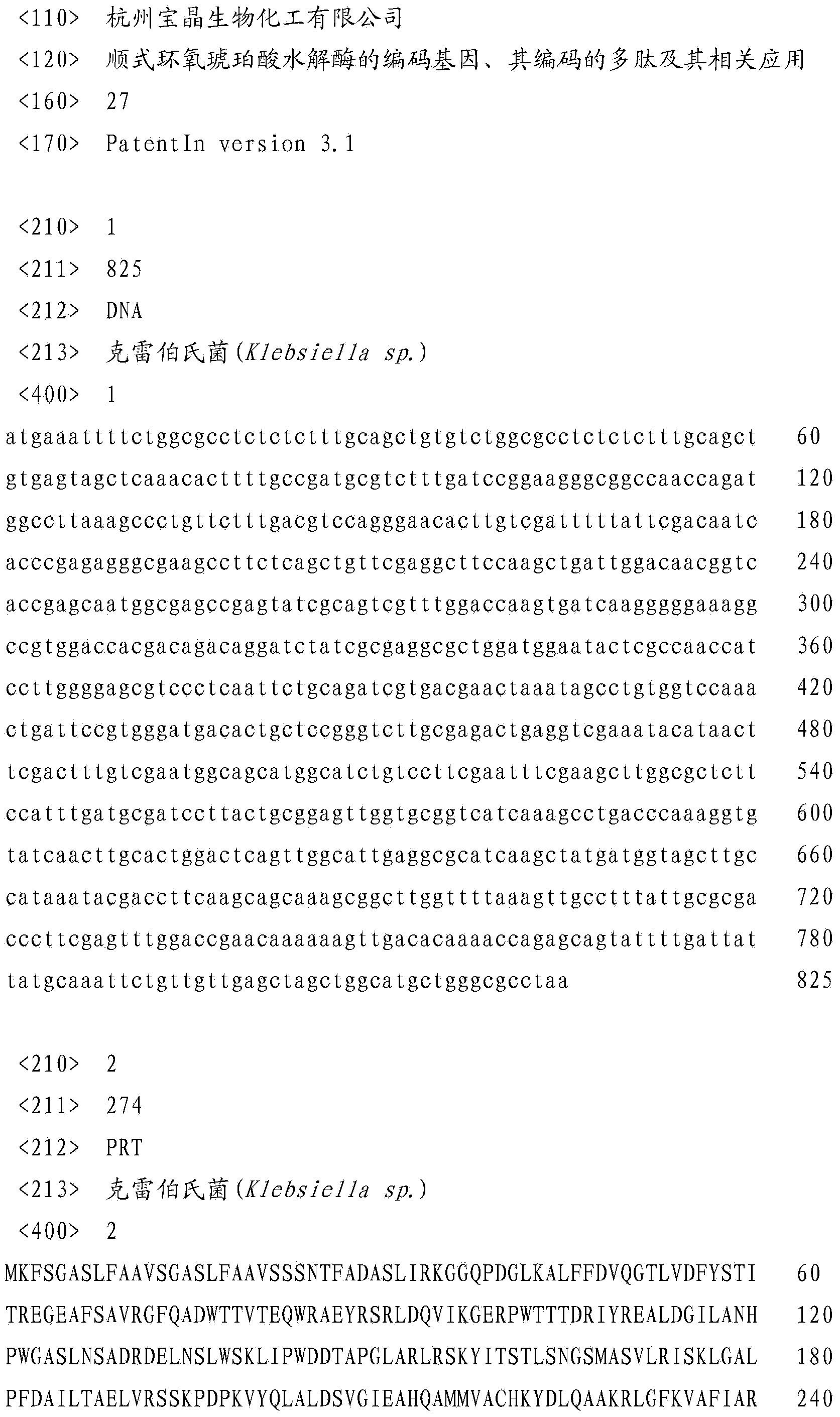Coding gene of cis-form epoxy succinic acid hydrolase, polypeptides coded thereby and related applications
A technology for epoxysuccinic acid and encoding gene, which is applied in the field of preparing L-tartaric acid or its salt, and can solve the problems of low expression level, low production efficiency of L(+)-tartaric acid and the like
- Summary
- Abstract
- Description
- Claims
- Application Information
AI Technical Summary
Problems solved by technology
Method used
Image
Examples
Embodiment 1
[0045] Embodiment 1: Separation and purification of cis-epoxysuccinate hydrolase
[0046] Klebsiella sp.BK-58 (Klebsiella sp.BK-58) is stored in LB slant medium, the composition of which is: 1% peptone, 1% sodium chloride, 0.5% yeast extract, 1.5% agar , pH7.0.
[0047] 1: Determination of cis-epoxysuccinate hydrolase activity
[0048] Take 1.0 g of wet cells, wash twice with normal saline, suspend the wet cells with 10 mL of 1 mol / L sodium cis-epoxysuccinate (pH 8.0), react at 37°C for 1 h, and measure the content of tartaric acid in the reaction solution.
[0049] The detection method of tartaric acid content in the reaction solution is as follows: take 2.5mL of 1% ammonium metavanadate solution, place it in a 25mL volumetric flask, add an appropriate amount of the above reaction solution, add 1mL of 1mol / L sulfuric acid, and use distilled water to determine the content of tartaric acid. Make up to 25ml, take a part after mixing and measure the absorbance value at 480nm wi...
Embodiment 2
[0064] Example 2: Sequencing of the N-terminal and C-terminal ends of cis-epoxysuccinate hydrolase
[0065]The N-terminal amino acid sequence and C-terminal amino acid sequence of cis-epoxysuccinate hydrolase are detected by common methods, and the method is as follows: the cis-epoxysuccinate hydrolase obtained after the above separation and purification is subjected to SDS-polyacrylamide After gel electrophoresis, transfer to PVDF membrane by Western blotting. The membrane was stained with Coomassie Brilliant Blue staining solution, the band corresponding to cis-epoxysuccinate hydrolase was cut and recovered, and then the 10 amino acid sequences at the N-terminal were measured with a protein sequencer ABI PROCISETM494cLC, and the protein sequencer ABI PROCISETM491cLC was used to measure Measure its C-terminal 10 amino acid sequence. Sequencing results showed that the N-terminal 10 amino acid sequence of the cis-epoxysuccinate hydrolase is MKFSGASLFA (SEQ ID NO: 3), and the C...
Embodiment 3
[0066] Example 3: Design of degenerate primers to clone cis-epoxysuccinate hydrolase gene
[0067] According to the N-terminal sequence (SEQ ID NO:3), C-terminal sequence (SEQ ID NO:4) and the stop codon sequence (TAA / TGA / TAG) of the above-mentioned cis-epoxysuccinate hydrolase Design two demerge primers as follows:
[0068] Primer 1: 5'-ATGAARTTYWSNGGNGCNWSNYTNTTYGCN-3' (SEQ ID NO: 5);
[0069] Primer 2: 5'-YYANGCNCCNARCATNCCNCCNARYTCNACNAC-3' (SEQ ID NO: 6);
[0070] Among them, R: A / G, Y: C / T, W: A / T, S: G / C, V: A / G / C, N: A / G / C / T.
[0071] The steps for cloning the cis-epoxysuccinate hydrolase gene with degenerate primers are as follows:
[0072] (1) Use liquid LB medium to culture Klebsiella BK-58 at 200rpm on a shaker at 30°C, collect cells after 12h, and extract according to the method described in AxyPrep Bacterial Genomic DNA MiniPrep Kit (AXYGEN) Genome of Klebsiella BK-58.
[0073] (2) Using the above-mentioned genome as a template and primer 1 and primer 2 as p...
PUM
 Login to View More
Login to View More Abstract
Description
Claims
Application Information
 Login to View More
Login to View More - R&D
- Intellectual Property
- Life Sciences
- Materials
- Tech Scout
- Unparalleled Data Quality
- Higher Quality Content
- 60% Fewer Hallucinations
Browse by: Latest US Patents, China's latest patents, Technical Efficacy Thesaurus, Application Domain, Technology Topic, Popular Technical Reports.
© 2025 PatSnap. All rights reserved.Legal|Privacy policy|Modern Slavery Act Transparency Statement|Sitemap|About US| Contact US: help@patsnap.com



